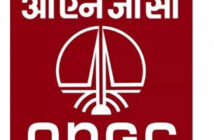Tax on sale or purchase of goods within a State as per Entry List II of Seventh Schedule of the Constitution is a State subject, and accordingly, VAT was been introduced by the concerned States, in place of turnover taxes. The introduction of VAT ensured that credit of taxes paid on the inputs were available to a tax payer while discharging his output tax liability. This helped in minimizing cascading of taxes at the State level and in increasing compliance because of the in-built mechanism of transfer of input tax credit. VAT led to a simplification of taxes at the State level.
Presently, the Constitution empowers the Central Government to levy excise duty on manufacturing and service tax on the supply of services. Similarly, it empowers the State Governments to levy sales tax or value added tax (VAT) on the sale of goods. This exclusive division of fiscal powers has led to a multiplicity of indirect taxes in the country. Further, central sales tax (CST) is levied on intra-State sale of goods by the Central Government, but collected and retained by the exporting States. In addition, many States also levy an entry tax on the entry of goods in local areas.
This multiplicity of taxes at the State and Central levels has resulted in a complex indirect tax structure in the country that is ridden with hidden costs for the trade and industry. Firstly, there is no uniformity of tax rates and structure across States. Secondly, there is cascading of taxes due to ‘tax on tax’. No credit of excise duty and service tax paid at the stage of manufacture is available to the traders while paying the State level sales tax or VAT, and vice-versa. Further, no credit of State taxes paid in one State can be availed in other States. Hence, the prices of goods and services get artificially inflated to the extent of this ‘tax on tax’.
The introduction of GST would mark a clear departure from the scheme of distribution of fiscal powers envisaged in the Constitution. The proposed dual GST envisages taxation of the same taxable event, i.e., supply of goods and services, simultaneously by both the Centre and the States. Therefore, both Centre and States will be empowered to levy GST across the value chain from the stage of manufacture to consumption. The credit of GST paid on inputs at every stage of value addition would be available for the discharge of GST liability on the output, thereby ensuring GST is charged only on the component of value addition at each stage. This would ensure that there is no ‘tax on tax’ in the country.
GST will simplify and harmonise the indirect tax regime in the country. It is expected to reduce cost of production and inflation in the economy, thereby making the Indian trade and industry more competitive, domestically as well as internationally. It is also expected that introduction of GST will foster a common or seamless Indian market and contribute significantly to the growth of the economy.
Further, GST will broaden the tax base, and result in better tax compliance due to a robust IT infrastructure. Due to the seamless transfer of input tax credit from one stage to another in the chain of value addition, there is an in-built mechanism in the design of GST that would incentivize tax compliance by traders.This was stated by Shri Santosh Kumar Gangwar, Minister of State in the Ministry of Finance in written reply to a question in Rajya Sabha today.





